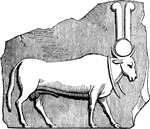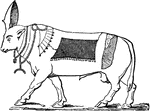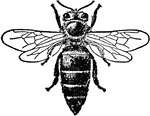Clipart tagged: ‘Apis’

Apis
"The bull worshipped by the ancient Egyptians, who regarded it as a symbol of Osiris, the god of the…

The Bull Apis
Also known as Hapis. In mythology, Apis was a commonly worshipped bull-deity in the Memphis region.

Bee Abdomen
"Abdominal Plate (worker of Apis), under side, third segment. W, wax-yielding surface, covering true…


